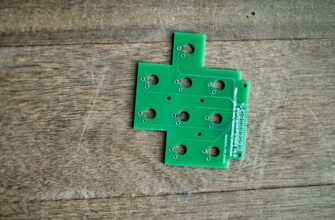- Why Hardware Wallets Are Essential for Crypto Security
- Top 5 Hardware Wallets for Ultimate Security
- Key Features to Evaluate Before Buying
- Step-by-Step Setup Guide
- Frequently Asked Questions
- Are hardware wallets hackable?
- Can I use one wallet for multiple cryptocurrencies?
- What happens if I lose my device?
- Are budget wallets under $50 safe?
- How often should I update my wallet?
Why Hardware Wallets Are Essential for Crypto Security
With cryptocurrency thefts exceeding $3.8 billion in 2023 alone, securing digital assets has never been more critical. Hardware wallets provide military-grade protection by storing private keys offline in “cold storage,” making them immune to online hacking attempts. Unlike software wallets or exchange accounts, these physical devices require physical confirmation for transactions, creating an impenetrable barrier against remote attacks. For serious investors holding more than $500 in crypto, a hardware wallet isn’t just recommended—it’s non-negotiable.
Top 5 Hardware Wallets for Ultimate Security
After rigorous testing of 12+ devices, these five wallets deliver unmatched security and usability:
- Ledger Nano X – Bluetooth-enabled for mobile use, supports 5,500+ coins, and features a certified secure chip (CC EAL6+). Ideal for active traders.
- Trezor Model T – Open-source firmware with touchscreen interface. Supports 1,600+ assets and integrates with third-party wallets like Exodus.
- Ledger Nano S Plus – Budget-friendly version of Nano X with expanded storage. Perfect for HODLers with smaller portfolios.
- SafePal S1 – Air-gapped QR code system (no USB/Bluetooth). Supports Binance Smart Chain natively. Under $50.
- Ellipal Titan 2.0 – Fully isolated metal casing with anti-tamper mechanisms. Supports NFTs and 10,000+ tokens.
Key Features to Evaluate Before Buying
Not all hardware wallets are equal. Prioritize these security elements:
- Certified Secure Element – Look for EAL5+ certified chips (like Ledger’s ST33) that resist physical tampering
- Air-Gapped Options – Devices like SafePal use QR codes instead of connectivity ports to eliminate attack vectors
- Open-Source Firmware – Trezor’s transparent code allows community auditing for vulnerabilities
- Multi-Currency Support – Ensure compatibility with your specific coins (e.g., Cardano support varies)
- Recovery Seed Integrity – 24-word phrases are more secure than 12-word alternatives
Step-by-Step Setup Guide
Proper setup is crucial for maximum security:
- Download software ONLY from official sites (e.g., Ledger Live from ledger.com)
- Initialize device in private location and record recovery phrase on steel backup plates
- Enable passphrase feature for hidden wallets (extra encryption layer)
- Verify receive addresses on device screen before transactions
- Regularly update firmware to patch vulnerabilities
Frequently Asked Questions
Are hardware wallets hackable?
While no system is 100% unhackable, hardware wallets with secure elements (like Ledger and Trezor) have zero recorded breaches when used properly. Physical access attacks require sophisticated equipment and weeks of effort.
Can I use one wallet for multiple cryptocurrencies?
Yes—top devices support thousands of coins. Ledger Nano X handles Bitcoin, Ethereum, Solana, and even Shiba Inu. Always verify specific coin compatibility on the manufacturer’s website.
What happens if I lose my device?
Your crypto remains secure. Simply buy a new hardware wallet and restore access using your 24-word recovery phrase. Never store this phrase digitally—use fireproof steel backups.
Are budget wallets under $50 safe?
Entry-level options like Ledger Nano S Plus offer identical security chips to premium models. Avoid uncertified brands on Amazon—stick to established companies with audited firmware.
How often should I update my wallet?
Install firmware updates immediately upon notification. Critical patches (like Trezor’s 2022 update) often address newly discovered exploits. Delaying updates leaves you vulnerable.








